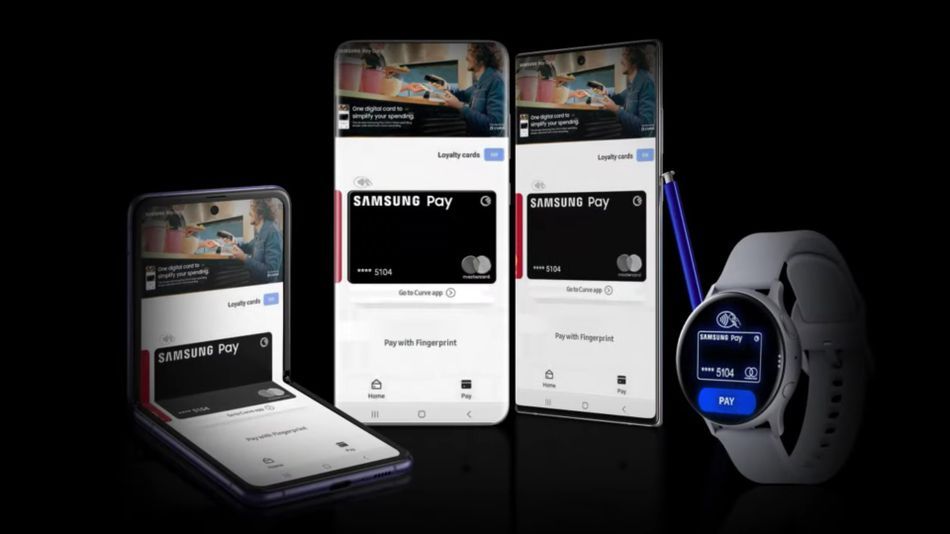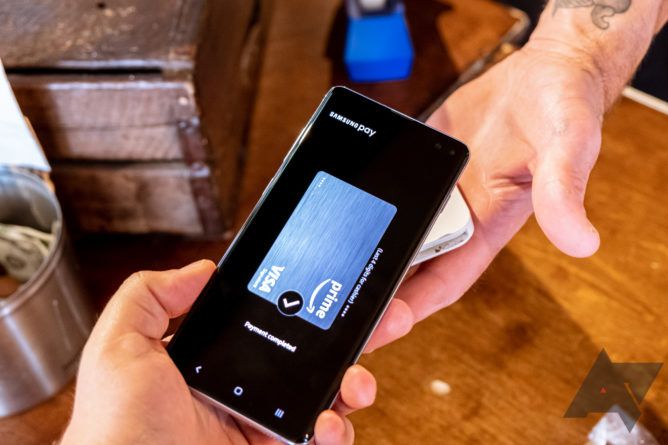What Pay Service Is Best Apple,samsung Or Android
Things have inverse a lot since NFC offset came to Android way, way back in 2011. Carriers tried to stick their noses in NFC payments when the technology showtime rolled out, just thankfully, they failed. Y'all tin make contactless payments with any Android phone containing an NFC chip, regardless of your carrier, simply yous might have more than ane pick. If y'all've got a Samsung telephone, you lot can cull between Samsung'due south pre-installed payment platform or Google Pay. While both offer the same basic tap-to-pay NFC functionality, there are some differences in their ease of use and the apps themselves. Here's how to figure out which i is best for you lot.
Google Pay
If y'all've got an Android phone, you tin use Google Pay, which got a completely new app in 2020 with reward features. However, you need NFC to make mobile payments with the app. There are still some budget phones that lack an NFC scrap (similar the Moto Grand family, bizarrely), but most phones have them. If your phone checks that box, using Google Pay is easy. You demand a secure lock screen or biometrics like fingerprint scanning gear up on your device, just there are plenty of reasons you lot should have that regardless of your mobile payment usage. Subsequently unlocking, simply tap your telephone on the payment terminal, and your preferred card will axle over.
The setup process and the app itself are faster and less abrasive than Samsung Pay. Plus, Google Pay works with almost whatsoever carte du jour in the US. Most of the newly added banks these days are smaller local networks and credit unions, and they simply keep on coming. At this bespeak, there are so many supported banks that information technology's becoming hard to detect ones that aren't listed. Google Pay besides has support for membership cards, gift cards, and fifty-fifty transit passes in a few places. Some airlines have added plane tickets, too. Although, the app's reliance on your phone number for logins is a bit annoying.
The virtually notable drawback of Google Pay is that information technology only works at stores that have NFC enabled on the payment terminals. That used to be exceedingly rare, but it'southward gotten more than widespread in the last few years, especially during the pandemic. The practiced news is that NFC-enabled terminals volition usually sympathize your carte without any boosted button presses or PIN codes. The depression failure charge per unit means mobile payments tin actually save yous time.
NFC payments are, despite what you may hear, highly secure. As long as your phone's is protected with a lawmaking or biometric unlock method, NFC is really more secure than using a concrete credit bill of fare. That's non just because of the extra hallmark layer, but because your true credit card number is not stored on your phone at all with NFC payments. Instead, a virtual card number is assigned to yous, which is what the card reader sees when you use tap-to-pay, making your real card number much harder to compromise equally the point of auction level.
Samsung Pay
To use Samsung Pay, y'all will, of form, need a Samsung phone. Maybe you already accept one, or perhaps you're thinking about ownership one, and Samsung Pay looks like a good selling betoken. Older Samsung phones accept a technology chosen MST (Magnetic Secure Transmission) to push the magnetic stripe data from your card to non-NFC terminals, only the latest S22 series does non, and I wouldn't hold your jiff for hereafter back up. Samsung has moved away from that—the S21 family dropped back up for MST in the US. Samsung Pay too supports NFC, just this kills one of the major advantages Samsung had versus Google Pay.

After adding your bill of fare (Samsung Pay supports nigh as many cards as Google), you tin initiate a payment from the lock screen or home screen with a swipe-up gesture. You can also switch between cards from this UI. If you have a foldable like the Milky way Z Flip3, yous don't fifty-fifty have to open up the phone to initiate an NFC payment. Samsung has an extra security step to make a payment compared to Google, though. In our experience, the app as well seems a bit slower to recognize NFC readers than Google Pay, which is well-nigh always instant the moment y'all put it over the terminal.
Like Google Pay, Samsung Pay has back up for gift and membership cards. Samsung also offers numerous discounts and special deals, only it can end upward being a bit spammy. Odds are you won't care about nearly of the retailers offering discounts in the app, and Samsung even pushes promo notifications sometimes. You lot tin disable the diverse bargain and partner notification channels, but the app itself still has what amount to ads all over the identify, not unlike the redesigned Google Pay app.
Which should you use?

If you don't already have a Samsung phone, Samsung Pay isn't a good reason to buy ane. The proliferation of NFC engineering science means you lot'll get enough of use out of Google Pay, and Samsung has dropped the MST tech from its latest phones. The Google Pay app is as well more than enjoyable to apply, even afterward the recent redesign.
Even if you lot do accept a Samsung phone, Samsung Pay might not be worth your time. Google Pay is even easier to employ if yous're running Android 12 thanks to the addition of payment cards to the lock screens shortcuts. Just tap the push button in the lower right corner, and you'll get (among other things) access to all your verified cards. Correct now, it'southward not fifty-fifty close—Google Pay is the amend option.
What Pay Service Is Best Apple,samsung Or Android,
Source: https://www.androidpolice.com/google-pay-vs-samsung-pay-which-should-you-use/
Posted by: kinghistorl.blogspot.com



0 Response to "What Pay Service Is Best Apple,samsung Or Android"
Post a Comment